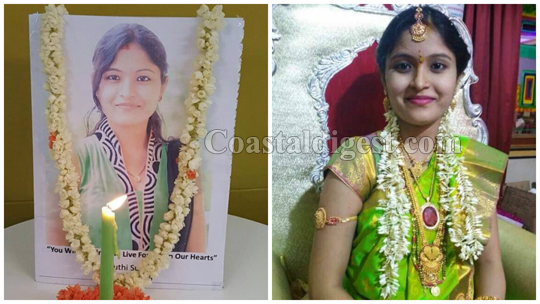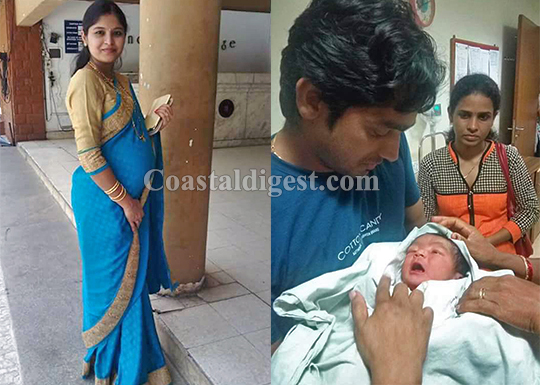Udupi, Jun 14: A kin of a young woman, who died after giving birth to a child at a private hospital here, last week allegedly due to the doctor's negligence, took to social media to create awareness against killer doctor'. The post on Facebook was shared by thousands of people within a day and it also went viral on WhatsApp.

According to the Facebook post uploaded by one Kanni Rajan, 23-year-old Shruthi Suvarna, died on June 10 during caesarean because of the negligence by a female gynaecologist at Gandhi Hospital.
The post claimed that the doctor initially gave Shruthi a pain killer injection and when she was in labour, the baby stuck halfway. So the doctor tried to perform a caesarean and “while operating she (the doctor) cut the main blood nerve.”
The doctor couldn't stop the bleeding, which led to Shruthi's death, the post alleged, adding that she was the fourth victim of the same doctor.
Shruthi, who hailed from Pangala in Udupi, had married her friend Sandeep, a year ago. According to the Facebook post, both the husband and wife were working for a company called Landmark'.
According to hospital sources, the newborn baby, who is deprived of breast-feeding mother's care, is healthy.
Even though the family members of the victim lodged a complaint with Udupi Town Police, no action was taken against the doctor or hospital so far.
“If it is a medico legal case', the victim's relatives should have informed the police immediately after the death. But, now they have already cremated the body. A post mortem would have been the strong evidence to prove what had gone wrong,” police sources said.
(Note: The Facebook post has also revealed the name of the doctor. Coastaldigest.com avoided it as no FIR was registered against her)






Comments
Its too early to blame the Doctor before a full enquiry I understand the pain that the kith and kin undergoing at this moment
Add new comment